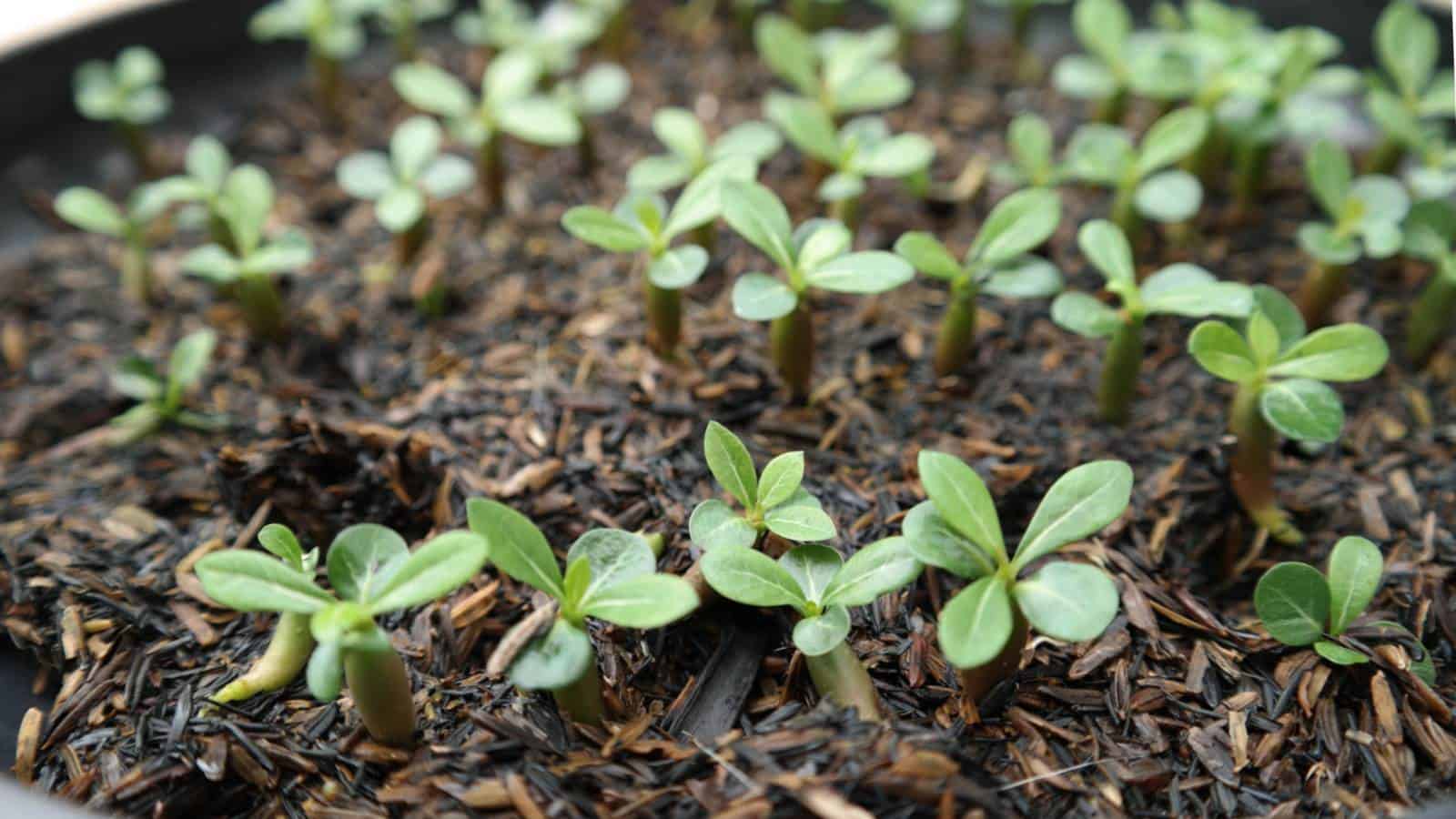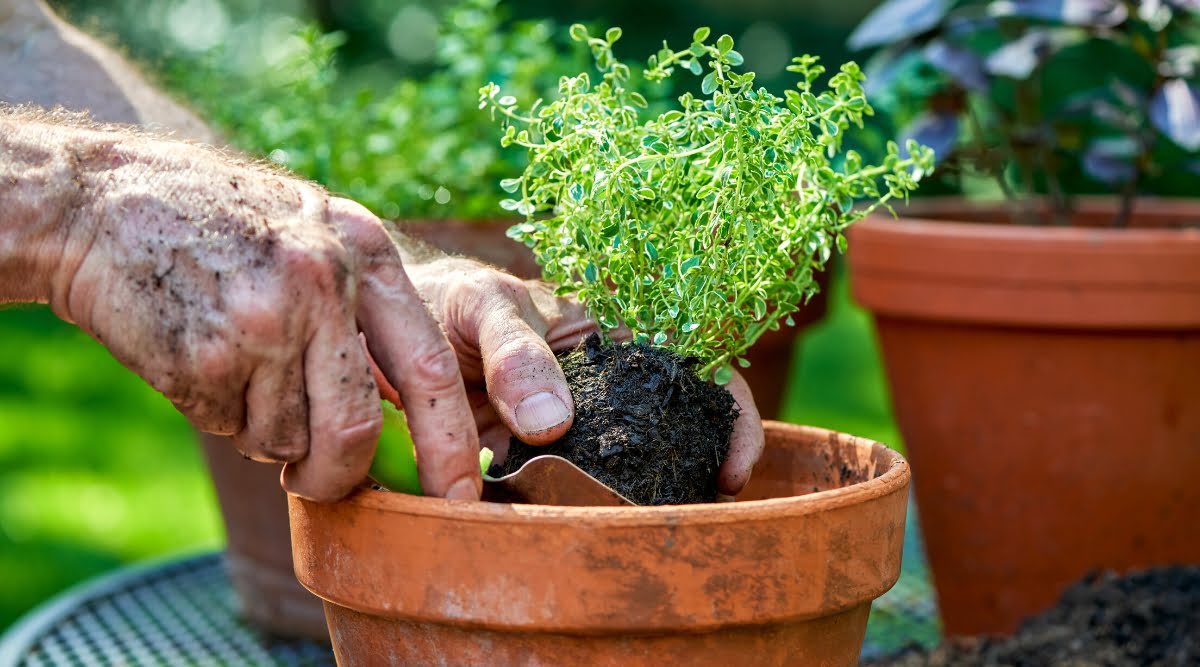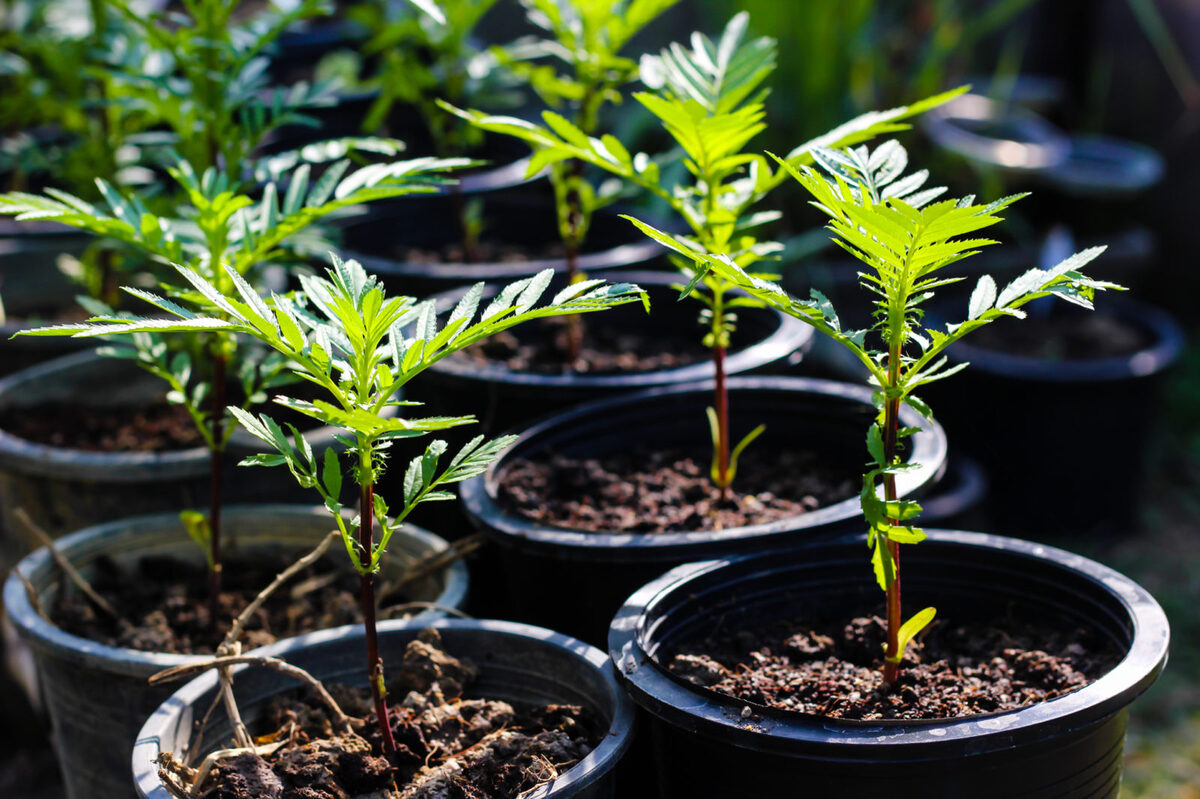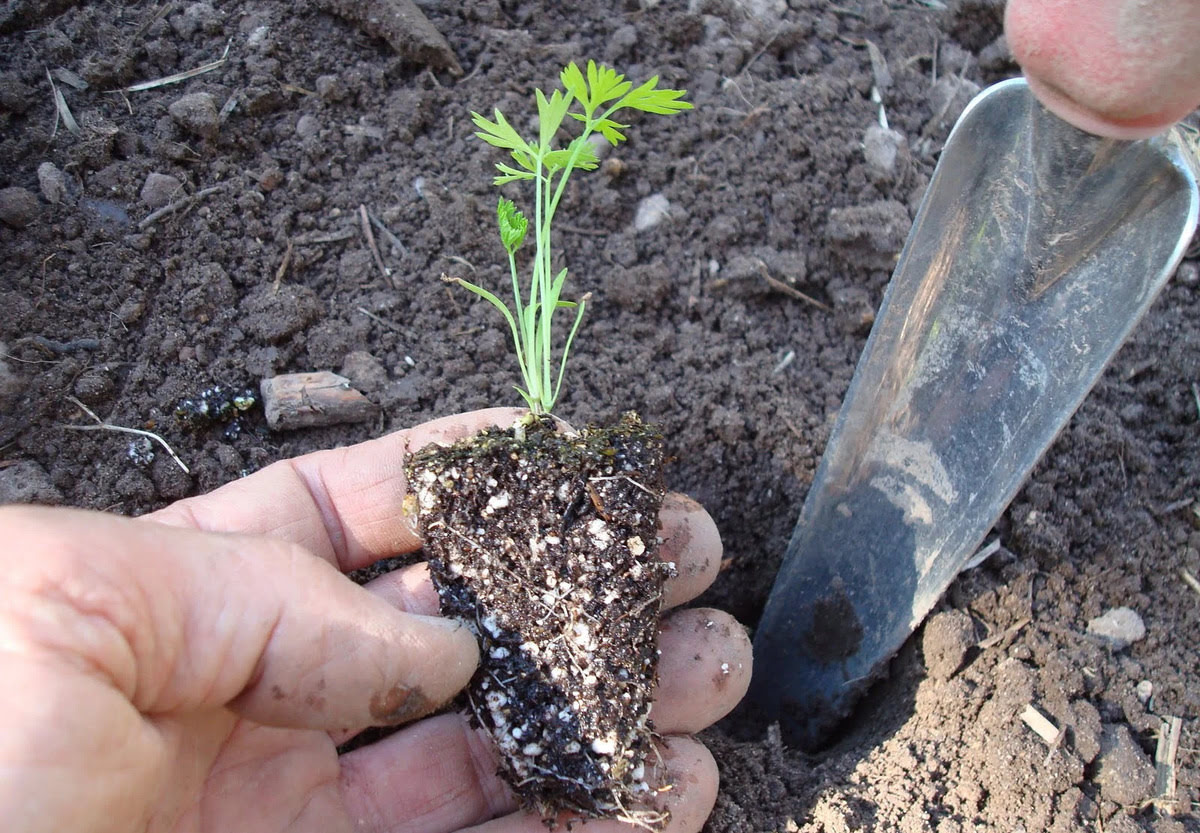Home>Types of Gardening>Ornamental Gardening>When To Transplant Desert Rose Seedlings


Ornamental Gardening
When To Transplant Desert Rose Seedlings
Published: January 7, 2024
Discover the ideal time to transplant desert rose seedlings in your ornamental garden. Expert tips and guidelines for successful transplantation
(Many of the links in this article redirect to a specific reviewed product. Your purchase of these products through affiliate links helps to generate commission for Chicagolandgardening.com, at no extra cost. Learn more)
Table of Contents
Introduction
Welcome to the fascinating world of ornamental gardening, where you can unleash your creativity and transform your outdoor space into a vibrant oasis. One plant that can add a touch of exotic beauty to your garden is the desert rose (Adenium obesum).
The desert rose is a succulent plant native to the arid regions of Africa and the Middle East. With its striking, trumpet-shaped flowers and thick, fleshy leaves, this plant is a true marvel of nature. Transplanting desert rose seedlings is a critical step in their growth and development. It allows them to establish a strong root system and thrive in their new environment.
However, transplanting desert rose seedlings requires careful consideration and planning. You need to assess various factors and ensure the proper timing for optimal results. In this article, we will explore the key aspects to consider when transplanting desert rose seedlings and provide you with the knowledge and guidance to help your plants flourish.
From preparing the soil to the transplanting process and aftercare, we’ll cover all the essential steps to ensure success. So, let’s dive in and discover when and how to transplant your desert rose seedlings!
Factors to consider before transplanting desert rose seedlings
Before you embark on the task of transplanting your desert rose seedlings, there are a few important factors to consider. These considerations will help ensure the health and survival of your plants in their new location:
- Size of the seedlings: It’s crucial to evaluate the size of your desert rose seedlings before transplantation. Ideally, they should have reached a height of at least six inches and have a well-developed root system. This size ensures that the seedlings are strong enough to withstand the stress of transplantation.
- Environmental conditions: Desert roses thrive in warm and arid climates. Therefore, it’s important to choose a location that provides ample sunlight and has well-draining soil. Avoid areas with excessive shade or high humidity, as these conditions can lead to root rot or other diseases.
- Watering schedule: Before transplanting, ensure that you’ve been watering your seedlings appropriately. Desert roses require infrequent but deep watering. This encourages the development of a deep and robust root system, which will help the plants withstand the stress of transplantation.
- Transplanting season: The timing of the transplant is crucial for the success of your desert rose seedlings. It’s best to transplant them during the spring or early summer when the weather is warmer and the chance of frost has passed. This allows the seedlings to establish themselves before the harsh conditions of winter.
- Health of the seedlings: Before transplantation, carefully inspect the seedlings for any signs of pests or diseases. If you notice any issues, treat them accordingly before proceeding with the transplant. Healthy seedlings have a better chance of thriving in their new location.
- Transplanting location: Choose a suitable location in your garden for the transplant. Ensure that the soil is well-prepared and free of weeds. The spot should also provide adequate space for the plants to grow and spread their roots without overcrowding.
By taking these factors into consideration, you can ensure a successful transplant and give your desert rose seedlings the best chance of thriving in their new home. Let’s now explore the ideal timing for transplanting desert rose seedlings.
Timing for transplanting desert rose seedlings
Choosing the right timing for transplanting your desert rose seedlings is crucial for their successful establishment and growth. The timing can vary depending on your location and climate, but there are some general guidelines to keep in mind:
Spring is often considered the optimal time for transplanting desert rose seedlings. As the weather starts to warm up, it signals the beginning of the growing season for most plants. Transplanting during this time allows the seedlings to take advantage of the favorable conditions and acclimate to their new environment before the heat of summer.
Avoid transplanting during periods of extreme temperatures, whether hot or cold. Desert roses are sensitive to temperature fluctuations, and transplanting during extreme conditions can put stress on the plants and hinder their growth. It’s best to wait until the temperatures are more moderate and stable.
Consider the local frost date in your area when planning the transplant. It’s important to wait until the risk of frost has passed to protect the delicate seedlings. Frost can cause severe damage, and it’s essential to ensure the young plants have a chance to establish their roots before facing such conditions.
Keep an eye on the rainfall patterns in your area. Avoid transplanting during periods of heavy rain, as excessive moisture can lead to root rot and other fungal diseases. Wait until the soil has drained properly and is slightly dry before proceeding with the transplant.
One way to determine if it’s the right time to transplant is by assessing the growth and development of the seedlings. Look for well-developed root systems and sturdy stems. If the seedlings have reached a height of around six inches and show signs of healthy growth, it’s a good indicator that they are ready for transplantation.
Remember to consider your specific climate and local weather conditions when determining the best timing for transplanting desert rose seedlings. Adapting to the unique characteristics of your region will greatly increase the chances of success for your plants.
Now that we’ve discussed the timing, let’s move on to preparing the soil for transplanting desert rose seedlings.
Preparing the soil for transplanting desert rose seedlings
The soil preparation process is a vital step in ensuring the successful growth and development of your transplanted desert rose seedlings. Here are some essential considerations:
Soil type: Desert roses thrive in well-draining soil. They are adapted to arid conditions and do not tolerate excessive moisture. Before transplanting, assess your soil type. If you have heavy clay soil, you’ll need to amend it to improve drainage. Add organic matter, such as compost or well-rotted manure, to enhance soil structure and increase its ability to drain excess water.
pH level: Desert roses prefer slightly acidic to neutral soil with a pH range of 6.0 to 7.0. You can test the pH level of your soil using a soil testing kit available at garden centers. If your soil is too acidic or alkaline, you can adjust it by adding amendments such as lime to raise the pH or sulfur to lower the pH.
Soil fertility: Desert roses require a moderately fertile soil to support their growth. Before transplanting, enrich the soil with organic matter, such as compost or aged manure. These organic materials provide essential nutrients, improve soil structure, and enhance moisture retention.
Weed control: Clear the transplanting area of any weeds or unwanted vegetation. Weeds compete with your seedlings for nutrients and water and can hinder their growth. Remove weeds manually or apply a layer of organic mulch around the transplanting area to suppress weed growth.
Drainage: As mentioned earlier, well-draining soil is crucial for the health of desert rose seedlings. Ensure proper drainage by amending the soil with organic matter and avoiding areas prone to waterlogging. If your garden has poor drainage, consider creating raised beds or mounds to improve water movement away from the plants’ roots.
Soil sterilization: If your transplanted seedlings have previously suffered from diseases or pests, it’s recommended to sterilize the soil before transplanting. This can be done through solarization, where you cover the soil with a clear plastic sheet and let the sun heat the soil, killing any pathogens or pests.
By preparing the soil properly, you provide your transplanted desert rose seedlings with the ideal growing conditions. Once the soil is ready, it’s time to move on to the actual transplanting process.
Transplanting process for desert rose seedlings
The transplanting process is a delicate procedure that requires careful handling to ensure the successful establishment of your desert rose seedlings. Here are the steps to follow:
- Prepare the planting hole: Dig a hole in the prepared soil that is slightly larger and deeper than the root ball of your seedling. This will provide enough room for the roots to spread out and grow.
- Remove the seedling from its container: Gently remove the desert rose seedling from its nursery container, taking care not to damage the roots. If the roots are tightly bound, you can gently loosen them to encourage outward growth.
- Place the seedling in the hole: Carefully place the root ball of the desert rose seedling into the prepared hole. Ensure that the top of the root ball is level with or slightly above the surrounding soil surface.
- Backfill the hole: Gradually backfill the hole with the amended soil, gently firming it around the roots as you go. Avoid compacting the soil too much, as this can restrict root growth and water movement.
- Water thoroughly: Once the seedling is planted, water it thoroughly to settle the soil and eliminate any air pockets around the roots. Use a gentle stream of water to avoid washing away the soil around the root ball.
- Mulch around the seedling: Apply a layer of organic mulch, such as wood chips or straw, around the base of the plant. This helps conserve moisture, suppress weed growth, and regulate soil temperature.
- Provide support if needed: If your desert rose seedling is tall or top-heavy, consider using stakes or ties to provide support until it establishes a more stable root system. This will prevent the plant from bending or breaking in strong winds.
- Continue proper care and maintenance: After transplanting, ensure that your desert rose seedling receives adequate sunlight, water, and nutrient support. Monitor the soil moisture levels and water the plant when the top inch of soil becomes dry. Avoid overwatering, as desert roses are susceptible to root rot.
Remember to be gentle during the transplanting process, as the roots of desert rose seedlings are sensitive. Gradually adjusting to their new environment will help them establish and thrive in the long run.
Now that you know how to transplant your desert rose seedlings, let’s move on to the essential aftercare and maintenance practices.
Aftercare and maintenance for transplanted desert rose seedlings
Congratulations on successfully transplanting your desert rose seedlings! Now, it’s essential to provide them with proper aftercare and maintenance to ensure their continued health and growth. Here are some essential practices to keep in mind:
- Watering: Proper watering is crucial for the well-being of your transplanted desert rose seedlings. Water them deeply but infrequently to encourage deep root growth. Allow the soil to dry out slightly before watering again, as overwatering can lead to root rot. Monitor the moisture level by checking the top inch of soil; if it feels dry, it’s time to water.
- Fertilization: Desert roses benefit from occasional fertilization to provide the necessary nutrients for healthy growth. Use a balanced fertilizer formulated for flowering plants and follow the recommended dosage on the package. Apply the fertilizer during the growing season, typically every four to six weeks, and avoid fertilizing during periods of dormancy.
- Pruning: Regular pruning helps maintain the shape and size of your desert rose plant. You can prune back any leggy or overgrown branches to encourage bushier growth. Prune after the blooming period, typically in late winter or early spring, before new growth emerges. Use clean, sharp pruning shears to make clean cuts and minimize the risk of disease transmission.
- Pest and disease control: Keep an eye out for common pests like aphids, mealybugs, and spider mites that may target your desert rose plants. Regularly inspect the foliage for any signs of infestation or disease. If you notice any issues, treat them promptly with organic or chemical methods, depending on your preferences and the severity of the problem.
- Protection from extreme weather: Desert roses are sensitive to extreme weather conditions. Protect your plants from intense heat by providing shade during the hottest parts of the day. In colder climates, move potted desert roses indoors or cover them with frost blankets during freezing temperatures to avoid frost damage.
- Regular monitoring and care: Take the time to observe your desert rose seedlings regularly. Look for any changes in growth, signs of stress, or the presence of pests. Adjust your care regimen accordingly and address any issues promptly to ensure the health and longevity of your plants.
Remember, every garden is unique, and it’s essential to adapt your aftercare and maintenance practices to the specific needs of your desert rose seedlings. With proper care and attention, your transplanted desert roses will continue to thrive and reward you with their stunning blooms for years to come.
Now that you’re equipped with the knowledge to care for your desert rose seedlings, it’s time to put it into practice and enjoy the beauty they bring to your garden!
Conclusion
Transplanting desert rose seedlings is an exciting and rewarding process that allows you to bring the beauty of these exotic plants into your garden. By considering the factors before transplanting, choosing the right timing, preparing the soil, and following the transplanting process, you can provide your seedlings with the ideal conditions for successful growth.
Remember to assess the size of the seedlings, evaluate the environmental conditions, and ensure a proper watering schedule before starting the transplant. Timing is crucial, so choose a suitable season and avoid extreme temperatures. Prepare the soil by improving drainage, adjusting pH levels, and adding organic matter for fertility.
When transplanting, handle the seedlings with care, ensuring that the root ball is well-placed in the hole and the soil is properly backfilled and watered. Aftercare and maintenance are equally important, including adequate watering, proper fertilization, pruning, pest and disease control, protection from extreme weather, and regular monitoring.
With these carefully executed steps, your transplanted desert rose seedlings will have the best chance to establish themselves and thrive in their new surroundings. As the plants grow and mature, you will be rewarded with their stunning flowers and the joy of a well-nurtured garden.
Remember to adapt these guidelines to your specific climate and region, as different locations may require slight adjustments. Gardening is a continuous learning journey, so observe and adapt as needed to ensure the ongoing health and beauty of your desert rose plants.
Now that you are equipped with the knowledge and skills to successfully transplant your desert rose seedlings, it’s time to roll up your sleeves and get started on creating an enchanting garden oasis with these captivating plants!










